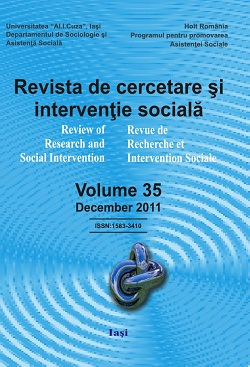PARTICULARITIES AND CHANGES IN THE CONFESSIONAL STRUCTURE OF THE POPULATION OF ROMANIA, AFTER 1990
PARTICULARITIES AND CHANGES IN THE CONFESSIONAL STRUCTURE OF THE POPULATION OF ROMANIA, AFTER 1990
Author(s): Mirela Lazar, Cornel LazarSubject(s): Social Sciences
Published by: Editura Lumen, Asociatia Lumen
Keywords: religion; censuses; confessional structure; cultural freedom; religious freedom; human rights;
Summary/Abstract: The cultural diversity of the world we live requires increased attention to cultural freedoms (religious, ethnic, linguistic), because of their importance in human development, both socially and economically. Ignoring this reality, imposing certain behaviour which is not in keeping with the individual’s beliefs or with those of the group he belongs to, generates exclusion and major conflicts, especially where ethnic and confessional structures are heterogeneous. For that purpose, appropriate multicultural policies are needed, to ensure unity in the existing diversity. To promote these policies are needed rigorous information which allows knowing and monitoring at first the structure and dynamics of population, from ethnic, religious, linguistic and cultural points of view. The paper presents and analyzes comparatively, based on the information taken from the last two censuses of population and housing, the confessional structure of the Romania’s population, its dynamics, its structural changes and existing particularities, according to various demographic, social and economic variables.
Journal: Revista de Cercetare şi Intervenţie Socială
- Issue Year: 2011
- Issue No: 35
- Page Range: 46-60
- Page Count: 15
- Language: English
- Content File-PDF

